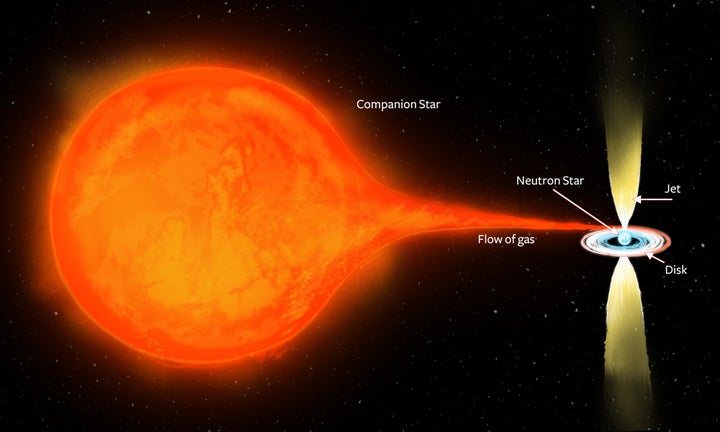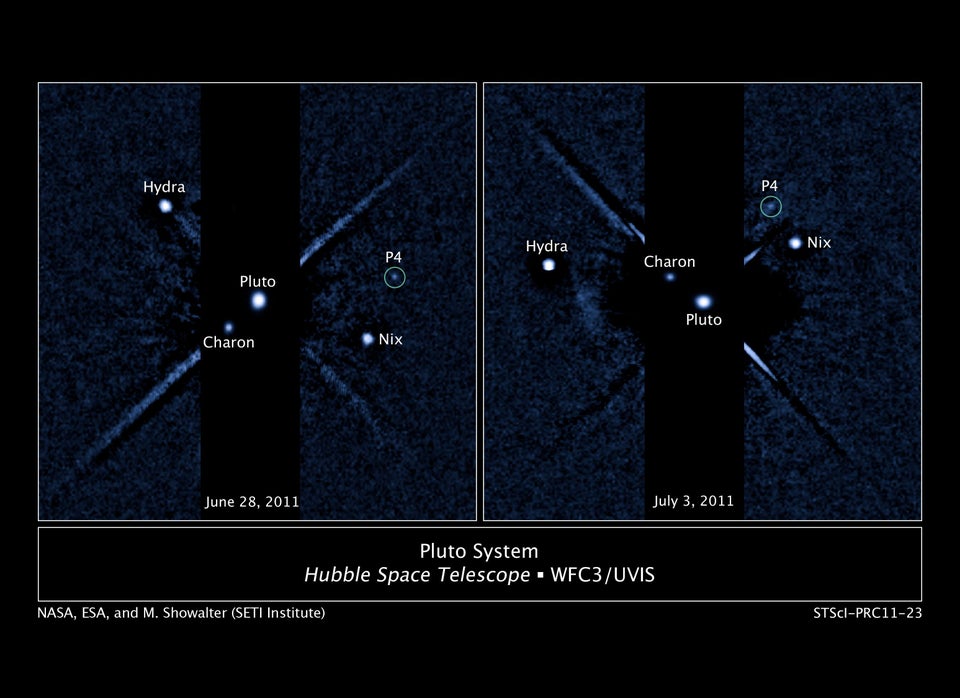A super-dense neutron star some 4,400 light-years away is not shy about showing off its strength.
According to a new study, the star -- which is named PSR J1023+0038 and has a companion star -- is shooting jets of gas into space with a strength that researchers previously thought was unique to black holes. These jets are formed when the neutron star's gravity pulls gas from its companion star, and some of the gas gets blasted outward.
"Black holes were previously considered the undisputed kings of forming powerful jets, even when they were only fed by a little bit of material from their companion star," Dr. Adam Deller, astronomer at the Netherlands Institute for Radio Astronomy and lead author of the study, said in a written statement. "In comparison, neutron stars seemed to make relatively puny jets, which only became bright enough to see when the neutron stars were gobbling gas from their companions at a very high rate."
(Story continues below image.)

An artist's impression of the binary star system PSR J1023 0038. The extremely dense, rapidly-spinning neutron star, just 10-15 kilometers in size, is in a close orbit with a more normal companion star.
A neutron star is a relatively small celestial object made up of closely packed neutron particles. They are formed when a once-large star explodes into a supernova, leaving behind only the central core.
"And the central parts of the star collapse under their own gravity," Dr. James Miller-Jones, astronomer at the Curtin Institute of Radio Astronomy in Western Australia and co-author of the study, said in the written statement. "These things are typically about one and a half times the mass of the sun and yet they're only 10-15 kilometers across, so they're incredibly dense."
For the study, astronomers used the Very Large Array radio telescope in New Mexico to take a close look at the neutron star, which was originally discovered in 2009. The astronomers analyzed their 2013 and 2014 radio and x-ray observations of the star and noticed that it was producing much stronger jets than expected.
Miller-Jones said that this study casts neutron stars in a new light, and shows that these celestial objects can sometimes launch jets that rival those coming from black holes.
The study was published online in the Astrophysical Journal on August 4, 2015.

